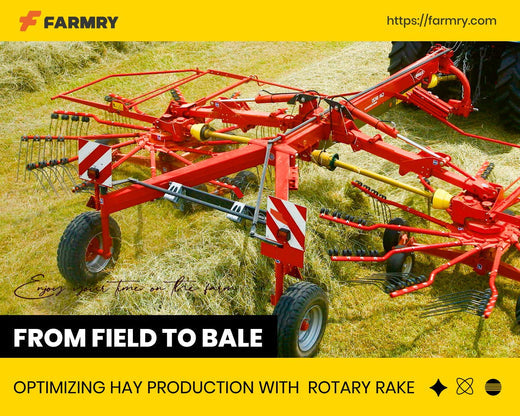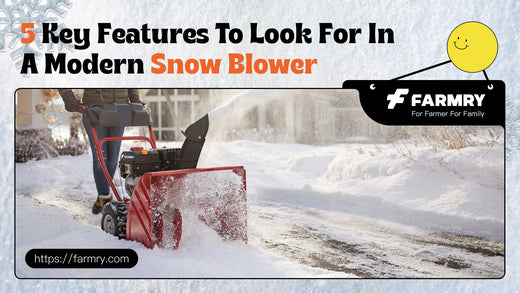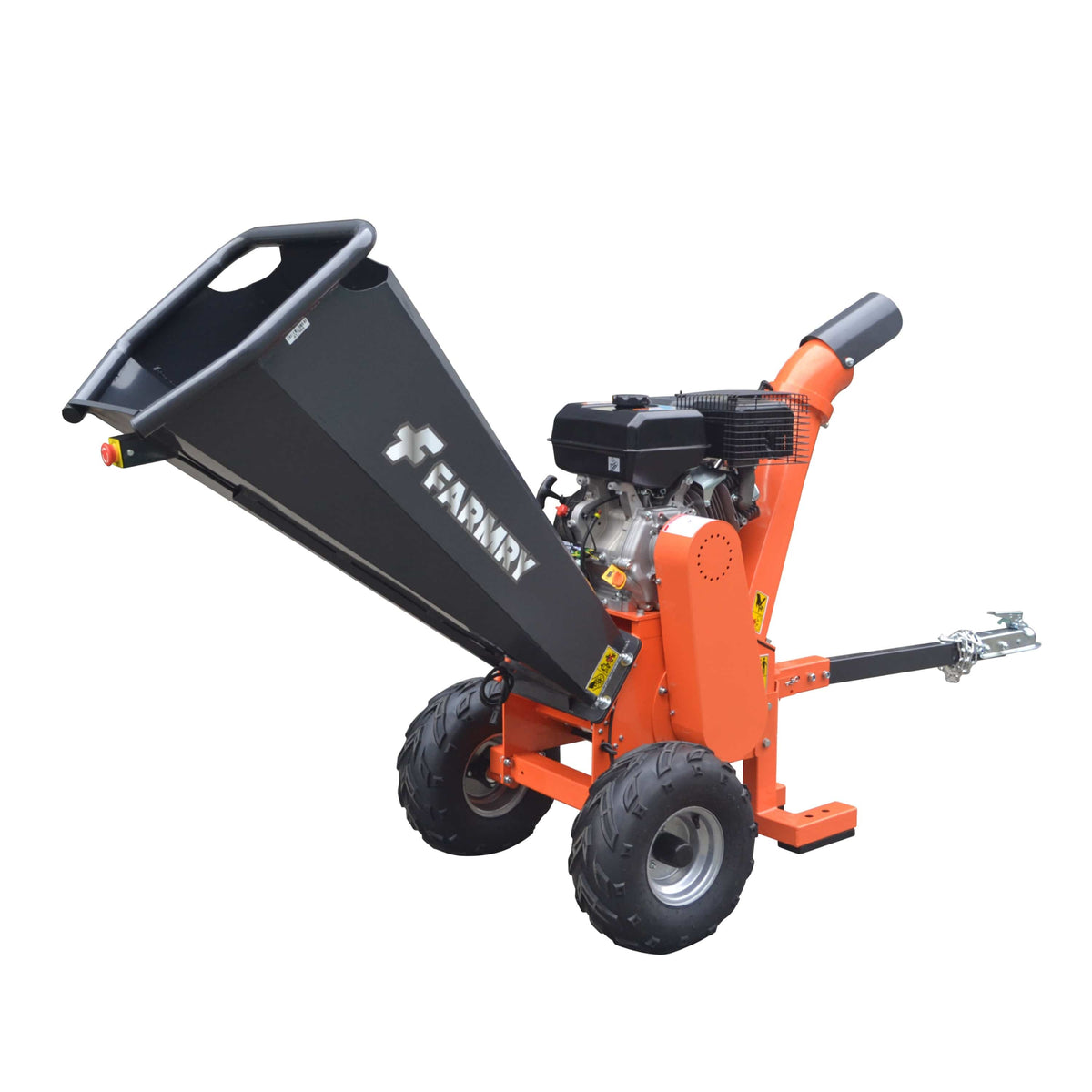Best Two-Stage Snow Blower: Why Farmry’s Two-Stage Snow Blowers Win Winter
 If you live where winter means heavy snow, wet snow, and the kind of deep snow that plow trucks push back onto your driveway, you already know a small single stage snow blower won’t cut it. You need the best two stage snow blower—a machine with enough power to throw snow far, bite through ice, handle uneven surfaces and gravel driveways, and still be easy to operate at 5 a.m. before work. That’s exactly where Farmry two stage snow blowers shine.
If you live where winter means heavy snow, wet snow, and the kind of deep snow that plow trucks push back onto your driveway, you already know a small single stage snow blower won’t cut it. You need the best two stage snow blower—a machine with enough power to throw snow far, bite through ice, handle uneven surfaces and gravel driveways, and still be easy to operate at 5 a.m. before work. That’s exactly where Farmry two stage snow blowers shine.
Below, I’ll break down how Farmry designs its two stage models to clear snow faster and cleaner, what to consider when choosing your right snow blower, and when (and when not) to think about three stage snow blowers. I’ll also map key features—from electric start to heated hand grips, discharge chute control, intake height, impeller, augers, and power steering—to real-world snow. If you’re shopping gas powered snow blowers this season, start here.
Why a Two-Stage Snow Blower (and Why Farmry)?
A two stage snow blower uses standard augers to gather snow and feed it to a separate impeller that flings it out the chute. This “two stage” design clears more snow and snow quickly—especially heavy snowfalls—compared with single stage blowers. Two-stage machines typically:
-
Tackle deeper snow (often 12" and up) without bogging.
-
Maintain traction and pace on large areas and wide driveways.
-
Handle gravel and irregular ground better (thanks to adjustable skid shoes).
-
Throw farther, so you can clear swaths and keep berms off the surface you just cleaned.
Farmry two stage snow blowers add thoughtful touches for real winters: electric start (ditch the pure pull cord routine on sub-zero days), optional heated hand grips for comfort, responsive power steering to swing the machine around tight turns, and quick-aim discharge chute controls so you can keep the machine forward and moving. For buyers who want rugged value with added durability, Farmry’s build approach focuses on thicker steel housings where it matters, robust shear pins to protect the drivetrain, and easy-to-service belts—so you can get back to clearing snow when the next band hits.
Two-Stage vs. Three-Stage: How to Choose the Right Snow Blower
You’ll see a lot of buzz about three stage snow blowers (sometimes called “more stages” or “three stage snow” machines). They add a third accelerator auger to move slush and compacted berms even faster. They’re powerful—but bigger, heavier, and more complex. Here’s a practical rule of thumb:
-
Pick a two stage snow blower if your winters bring a mix of wet, heavy snow and periodic deep snow—the classic suburban or rural experience with driveways from short to wide driveways, and the occasional snow plow ridge at the curb. These are the two stage blowers Farmry optimizes for the most common North American storms.
-
Consider a three stage snow blower when you’re constantly battling extreme conditions—think lake-effect bands, wind-packed 18–24" drifts, and “concrete” berms at the end of large properties or long gravel driveways. Yes, three stage can move more snow even faster, but you pay with more parts, more weight, and (typically) a higher price.
If you’re not sure, start with two stage. Farmry’s two stage models bring the sweet spot of capability, cost, and simplicity that most homeowners and small property pros need. Only step up to a three stage snow blower if your pattern truly warrants it.
How Farmry Two-Stage Models Conquer Real-World Snow
1) Wet, heavy, mixed snow
When winter throws slush in the morning and powder by noon, the Farmry two-stage design keeps pace. The auger chews, the impeller evacuates, and the tall intake height helps prevent choking. You’ll throw snow far enough to keep banks off the path, even as the storm flips from wet to cold.
2) Plow berms and end-of-driveway piles
Where many single stage counterparts stall, Farmry two-stage machines bite into dense berms and move the machine forward through the worst of it. The secret: separate stages, robust shear pins safeguarding the driveline, and the right ratio between augers and impeller for continuous flow.
3) Gravel driveways and uneven surfaces
Adjustable skid shoes let you raise the housing and avoid scooping stones. That preserves your impeller and augers, reduces broken shear pins, and keeps the surface neat. Two-stage is simply safer and more practical on gravel than single stage.
4) Long, wide driveways and large areas
On large areas or wide driveways, capacity matters. Farmry two-stage machines balance clearing width with maneuverability, so you can clear paths in fewer passes without wrestling a runaway tank. Power steering ensures you can pivot cleanly at the end of each run.
5) Cold starts without the drama
Subzero morning? Hit electric start and go. The pull option is still there for backup, but when the temp bites, the starter pays for itself. If you use electric models in smaller footprints, Farmry designs the starter system so there’s no fuss with your extension cord routine.
Feature Deep-Dive: What to Look For (and Why Farmry Nails It)
Electric start + pull cord
Every Farmry gas unit includes electric start—no more yanking a frozen pull cord while your coffee gets cold. For purists, recoil remains; for pragmatists, push-button reliability wins.
Engine & power
While electric motor options have improved for smaller spaces, gas snow blower performance still leads for clearing large areas and heavy snowfalls. Farmry’s gas powered models are tuned to keep torque where you need it most—through packed berms and deep snow. That means steadier feed and cleaner discharge through the chute.
Intake height & width
A taller intake height lets you tackle more snow per pass—especially deeper snow left by the snow plow. Pair that with a sensible clearing width and you’ll minimize passes without sacrificing control at the end of a row.
Augers & shear pins
Farmry uses standard augers engineered for durability and easy service. If you hit a buried rock on gravel driveways, shear pins are designed to break cleanly and save the gearbox. Keep a spare kit in the garage; swapping them is quick.
Impeller & discharge chute
The impeller is the heart of two stage snow performance. Farmry focuses on impeller design and housing clearance to push snow quickly, reduce clogs in wet snow, and throw snow far enough that it doesn’t blow back onto your just-cleared surface. Tool-less discharge chute controls help you adjust throw angle and direction on the fly.
Traction & power steering
With rutted ground, slopes, or drifted lanes, power steering is the feature you didn’t know you needed—until you try it. It lets you feather the inside wheel and carve clean turns without muscling a heavy machine.
Two-Stage vs. Single-Stage: Straight Talk
-
Single stage snow blowers excel on light, frequent dustings over smooth pavement. They’re nimble and great as an auxiliary snow thrower for porches or short walkways.
-
Two stage snow blowers are the main act for mixed storms, wet, heavy snow, and deeper snow. They’re kinder to gravel, more versatile on uneven surfaces, and better at the dreaded end-of-driveway pile.
If you’ve outgrown your single stage or you’re replacing it after a rough season, stepping up to a Farmry two-stage is the easiest upgrade you’ll feel on day one.
How to Choose Your Farmry Two-Stage Model
Use this quick framework to pick the model that matches your property and storm profile:
-
Surface & size
-
Driveways under 60 ft and fairly flat: a compact Farmry two-stage balances weight and width for easy storage.
-
Wide driveways or large properties: go up a clearing width class for fewer passes and time saved.
-
Gravel driveways or bumpy ground: prioritize adjustable skid shoes, taller intake height, and tough shear pins.
-
Snow type & depth
-
Mostly powder with occasional 8–12" events: any Farmry two-stage will feel like a revelation after single stage counterparts.
-
Frequent wet snow or heavy snowfalls (12–18"+): choose a higher-output impeller and a stronger engine tune to keep the discharge steady when slush tries to pack the housing.
-
Persistent end-of-drive berms: look for drift cutters and a deeper housing profile for “bite.”
-
Operator comfort
-
If turning a heavier machine worries you, pick Farmry power steering.
-
If you clear at night or in bitter wind, spec heated hand grips.
-
Want no-fuss starts? Stay with electric start on gas powered models.
-
Maintenance & uptime
-
Keep a small kit: extra shear pins, belts, and a can of spray for chute anti-stick.
-
Fuel care matters. Fresh fuel and a stabilizer keep carburetors clean so your engine fires on the first warmup—even after storage.
When to Consider a Three-Stage Snow Blower (and When Not To)
A three stage snow blower adds an accelerator to smash and feed dense snow faster. That can help if you regularly face extreme conditions: repeated storms over 18", brutal wind-packed drifts, and cement-like berms every week. The trade-offs:
-
Pros: Faster processing of dense, sticky, late-storm slop; potential time savings on truly brutal days.
-
Cons: More parts, more weight, often higher price, and typically more maintenance than a well-sized two-stage.
For most homeowners and small-property caretakers, Farmry two stage snow blowers remain the smarter default: simpler ownership, lower lifetime costs, and plenty of throughput for 95% of winter.
Real-World Scenarios: Match Farmry to Your Winter
-
Suburban commuter with a 2-car, 80-ft driveway
You need to clear snow before work, often in the dark, and handle the snow plow ridge. A mid-width Farmry two-stage with electric start, power steering, and heated hand grips keeps you moving and comfortable. -
Rural home with a long gravel lane
Snow depth varies, and you sometimes strike hidden rocks. Farmry’s adjustable skid shoes and simple shear pins save gearboxes and keep you going. Consider a higher intake height and impeller tune for big drifts. -
Corner-lot sidewalks plus parking pad
Maneuvering matters. A nimble Farmry two-stage with quick-adjust discharge chute control lets you aim away from cars and porches without stopping the machine forward motion. -
Property manager clearing multiple small lots
Reliability and training are big. Farmry’s intuitive controls, electric start, and forgiving drive take the friction out of early-morning cycles—and parts commonality means fewer spares to stock.
The Bottom Line
If your goal is to clear paths fast, keep berms at bay, and finish with a clean, safe surface, the best two stage snow blower for most buyers is a Farmry. With robust two stage engineering, smart controls, and user-first touches—electric start, power steering, heated hand grips, reliable shear pins, and a high-flow impeller—Farmry two stage snow blowers bring pro-grade performance to everyday winter work. They’re built to throw snow far, move more snow in fewer passes, and treat your back, hands, and schedule kindly.
Before the next snow through, pick the Farmry model that suits your driveway, snow profile, and comfort wishlist. When the sky opens, you’ll know you chose the right snow blower—and you’ll watch it clear swaths of snow like winter was just another chore on the list.







